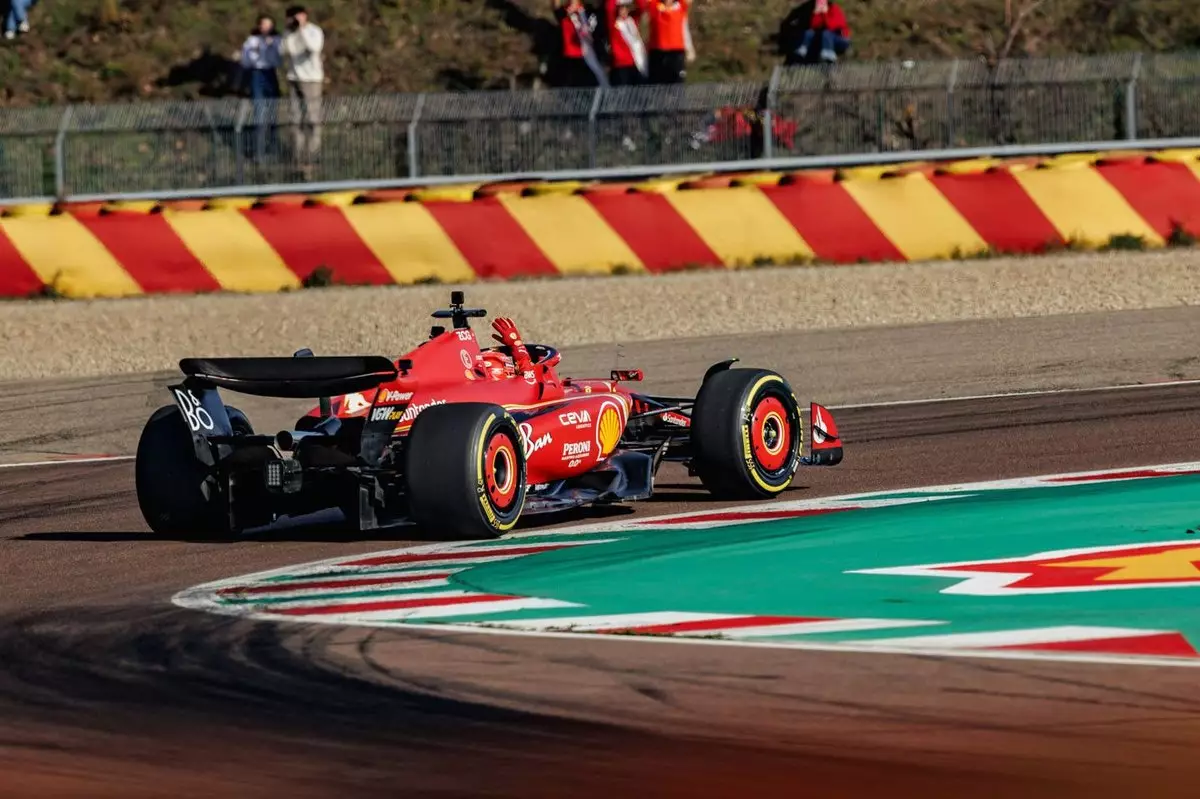Charles Leclerc, alongside his teammate Carlos Sainz, recently took the new Ferrari SF-24 for its first laps around the team’s private Fiorano test track. At the launch event, Leclerc expressed optimism, stating that his work on the simulator had indicated a “significant step forward” for the team. However, he was quick to caution that it was too early to determine if the real car matched that assessment. Let’s delve further into Leclerc’s initial impressions and explore what this means for the upcoming Formula 1 season.
In comparing the SF-24 to its predecessor, the SF-23, Leclerc revealed that the new car felt easier to drive around Ferrari’s private circuit. He emphasized that this observation was based on a limited number of laps with cameras mounted on the car, and he was not pushing it to its limits. Leclerc added that last year, he encountered difficulties with the SF-23’s behavior during its shakedown, describing it as “very, very difficult to drive.” In contrast, the SF-24 feels healthier and more at ease on the track. However, Leclerc was careful to emphasize that improved driveability does not necessarily translate to overall performance.
Leclerc pointed out the intricate nature of competitiveness in Formula 1. While a car may handle well, its ultimate success depends on its speed and lap time gains relative to other teams. He acknowledged that if rival teams have made more significant strides in terms of performance, then an easier-to-drive car may still not be fast enough to compete at the front. In essence, striking the right balance between drivability and speed is crucial for Ferrari.
With the Australian Grand Prix just around the corner, Leclerc admitted that it might take a few races for Ferrari to gauge where they stand in the pecking order for the 2024 season. The unique characteristics of the Bahrain, Saudi Arabia, and Melbourne circuits make it challenging to accurately assess a car’s performance from the outset. Leclerc drew from last season’s experiences, highlighting how external conditions during a race influenced the SF-23’s performance. These external factors, such as wind, temperature, and track layout, were masked in qualifying by the use of fresh, softer-compound tires. Therefore, it becomes imperative for Ferrari to unravel the true potential of the SF-24 across different tracks and environmental conditions before making conclusive judgments.
Leclerc concluded that patience is key in evaluating the SF-24’s capabilities. Formula 1 is a dynamic sport, with each race presenting unique challenges. A car that performs exceptionally well on one track may struggle on another. Variables such as wind, temperature, and track layout can significantly impact a car’s behavior and overall performance. Therefore, it is essential for Ferrari to remain adaptable and responsive, constantly evolving their strategy based on the ever-changing conditions to optimize their chances of success.
In the quest for Formula 1 glory, Charles Leclerc’s initial impressions of the new Ferrari SF-24 provide valuable insights. While the car displays improved drivability compared to its predecessor, the ultimate measure of success lies in its competitiveness against rival teams. Only time will tell how the SF-24 performs in different conditions and tracks. As Ferrari hits the track for the upcoming season, they must remain focused, patient, and adaptable to give themselves the best chance of claiming victory.


Leave a Reply